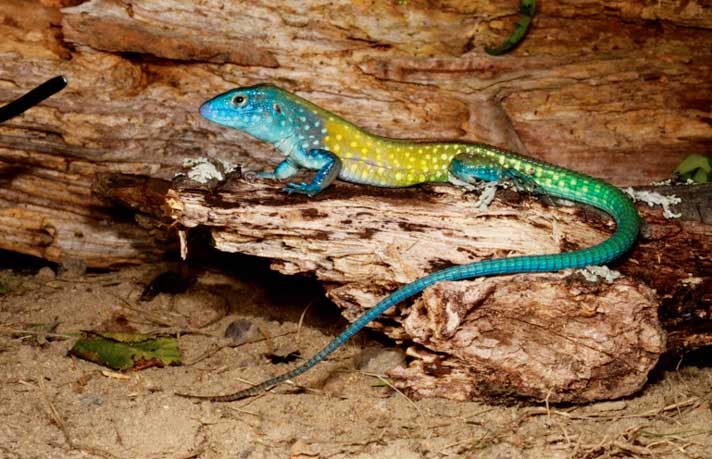The whiptails of the Americas and their close cousins, the ameivas, are fast on their feet.
Question: Why is it I never see much about keeping whiptail lizards?
Mark Spataro, Winter Park, Fla.
Answer: The whiptails are largely ignored as pets for a number of reasons, all of them valid because they epitomize what’s difficult about lizards in general. This does not mean they’re impossible to keep, but especially considering an appropriate group for the pet trade, they’re among the very worst.

Bill Love
The whiptails of the Americas and their close cousins, the ameivas, are fast on their feet.
The whiptails of the Americas and their close cousins, the ameivas, are fast on their feet. Right from the start, they’re hard to catch in the field, and thus, have always shown up infrequently even when wild-caught herps dominated the market.
That gave few breeders access to healthy stock during the earlier days of herpetoculture, when everyone was choosing favorites to hone their skills in reproducing lizards in captivity.
When you do finally lay your hands on a whiptail, they’re squirmy little suckers and often retaliate with a bite before you can reposition your grip while avoiding breaking their tails.
Most whiptails remain nervous in captivity, usually darting out of sight at the slightest disturbance, and often smashing into the cage glass and injuring their snouts in the process. With patience and gentle care, certain individuals can get over this tendency, but few novice keepers are adept at this kind of perseverance.
Next, whiptails of the genus Aspidoscelis (formerly Cnemidophorus) are extremely active and need to eat insects virtually every day to stay healthy. Providing a healthy diet of mixed kinds of bugs on a daily basis usually proves too much for new keepers, and without such dedication, these lizards tend to soon slip into poor health.
Lastly, the competition from all the other types of lizards that make more suitable pets has relegated the whiptails to a lower-level pet status. Hatchlings, too, even if they were captive bred in numbers, are tiny and delicate.
There’s likely just too much going against the whiptails to prevent them from ever making a big splash on the pet reptile scene.


